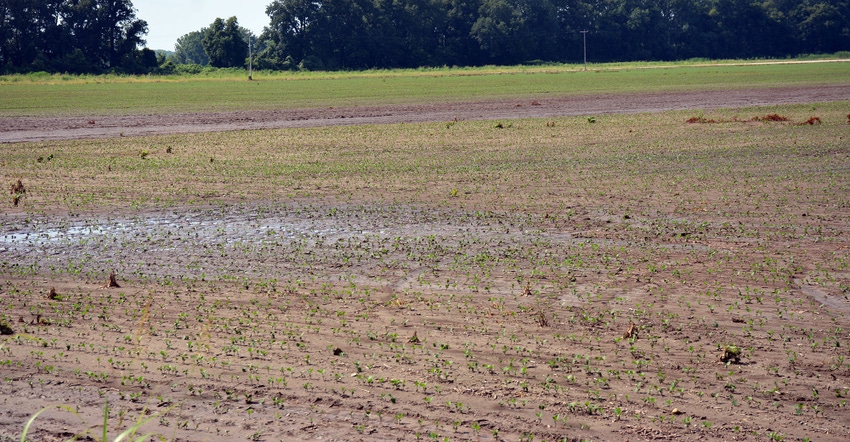
In spite of significant challenges in 2019, Arkansas farmers managed to produce yields close to five-year averages for most crops.
They will need to at least repeat that effort in 2020 to meet expected market obstacles, says an Arkansas agriculture economist.
"This was another challenging year for Arkansas rice, corn, soybean, and wheat farmers," says Bobby Coats, economist, Arkansas Department of Agriculture.
Coats cites excessive rain and flooding during the planting season, along with low commodity prices resulting from several fiscal, monetary, and trade policy issues around the world, as factors affecting Arkansas farm families as they look to 2020.
"Our row crop producers have now experienced five consecutive years of low to negative cash flow production seasons, due to weather, policy disputes, diseases like the African Swine Fever, and other factors," he says.
Financial obstacles
Financial challenges began with planting season. Excessive rainfall and extensive flooding in winter and spring prohibited farmers from planting significant acreage, Coats says. Arkansas Department of Agriculture figures show adverse weather prevented farmers from planting 327,732 acres of corn, 38,348 acres of cotton, 511,792 acres of rice, and 187,888 acres of wheat.
"In some cases, a field where a row crop was prevented from being planted was planted to another crop," Coats says.
It's not all bad news, however. "Despite the rough start, 2019 yields were close to the five-year average in most cases, as indicated below:
Corn harvested acres previous five-year average, 592,000; 2019 harvest, 740,000 acres.
Corn yield per acre previous five-year average, 180.6 bushels per acre; 2019 average, 175 bushels per acre.
Rice harvested acres previous five-year average, 1.364,600; 2019 harvest, 1,125,000 acres.
Rice yield per acre previous five-year average, 7,366 pounds per acre; 2019 average, 7,500 bushels per acre.
Soybeans harvested acres previous five-year average, 3,234,000; and 2019 harvest, 2,600,000.
Soybeans yield per acre previous five-year average, 49.4 bushels per acre; 2019 average, 50 bushels per acre.
Cotton harvested acres previous five-year average, 366,000; 2019 harvest, 610,000 acres.
Cotton yield per acre previous five-year average, 1,124 pounds per acre; 2019 average 1,102 pounds per acre.
Wheat harvested acres previous five-year average, 194,000; 2019 harvest, 50,000 acres.
Wheat yield per acre previous five-year average, 56 bushels per acre; 2019 average, 52 bushels per acre.
Coats says the Market Facilitation Program has helped offset some losses.
"In 2019, Arkansas producers received $381.18 million from the first two rounds of Market Facilitation Program payments to help offset losses due to trade disputes. The first set of payments started in July and amounted to $211.17 million and the second payment release started in October with payments to date of $107.01 million.
"Next year will be interesting, as is every year," Coats says. He offers a few observations on what he expects to see in 2020.
"U.S. long-grain rice producers will overplant and depress market prices. The U.S./China trade dispute and broader policy disputes, and to a lesser degree issues with our remaining international trading partners, indicate prices favoring weakness, so one would expect favorable market facilitation payments again next year."
Weather, as always, will affect production and markets. "Changing global weather patterns favor price support and pricing opportunities as we move through 2020 and into the 2020/21 marketing period," Coats says.
He expects Arkansas farmers to plant:
Long grain rice, 1,310,250 acres, medium grain 185,600 acres
Corn, 810,000 acres
Cotton, 530,000 acres
Soybeans, 3,009,000
Farmers will need effective risk management tools, he says. "All producers need strong market advisors and/or co-op marketing opportunities."
Coats says fiscal and monetary policy actions likely will provide pricing opportunities, especially for corn and soybeans during the 2020/21 marketing period.
"Working with your market advisor or advisors, identify acceptable price ranges. Be willing to accept the responsibility for your actions."
About the Author(s)
You May Also Like






